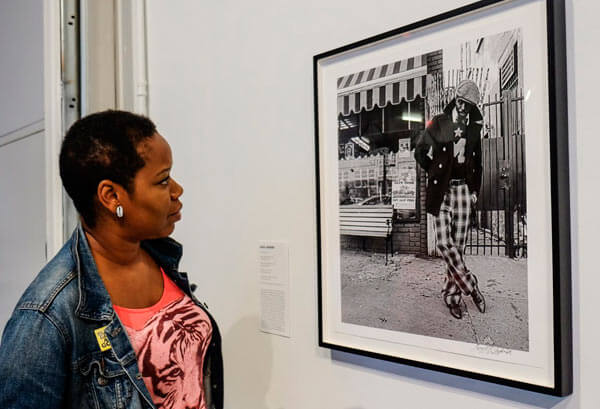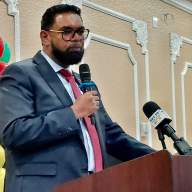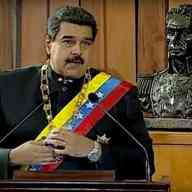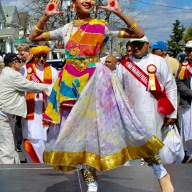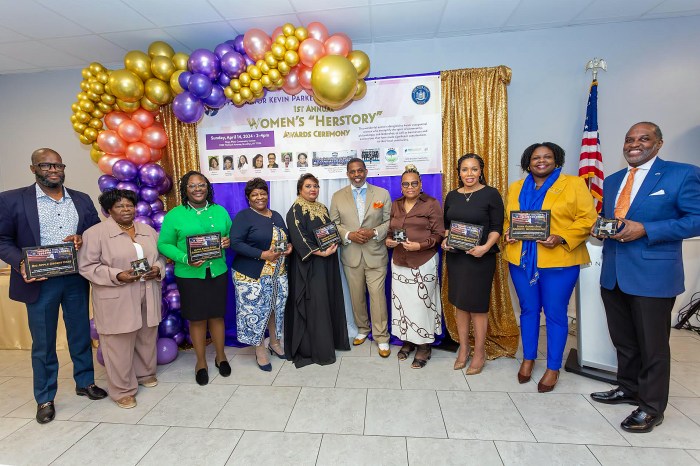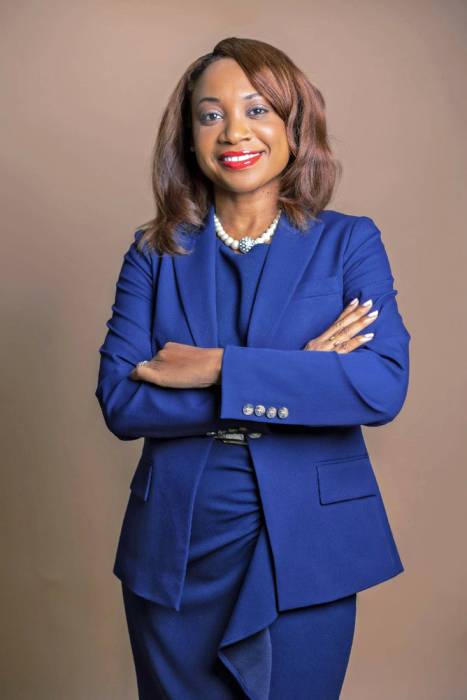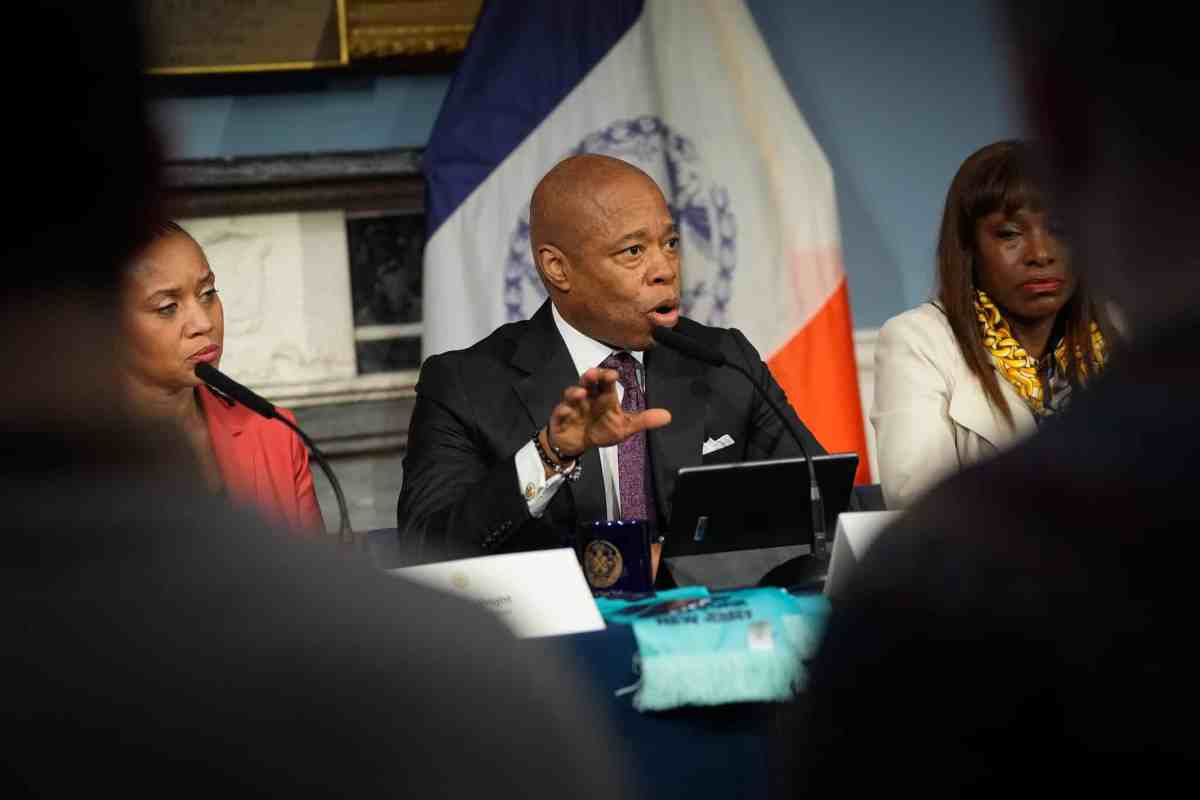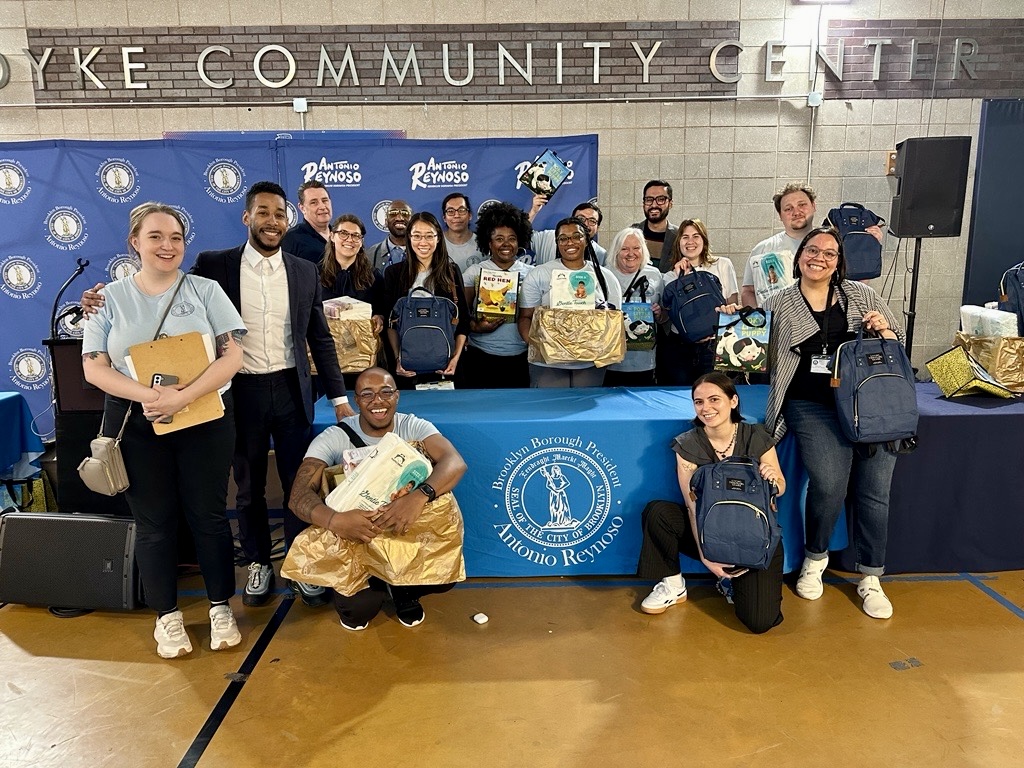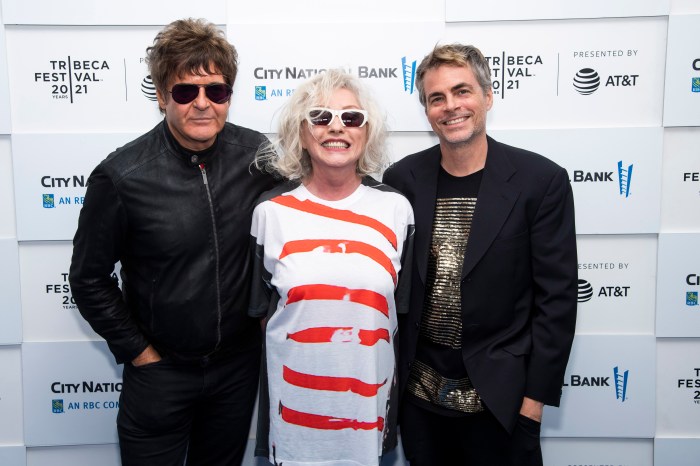The images in the expansive gallery just behind BRIC’s lobby performance space pays tribute to its home borough with the exhibition “Brooklyn Photographs” by 11 photographers.
“By the 1860s, Brooklyn had become the third largest city in the U.S.,” reads the intro in the accompanying 27-page exhibition catalogue. “The change is relentless,” writes Curator, VP BRIC Elizabeth Ferrer and how the images, black and white, color, analogue and digital “express the continual tension between the borough we know and what it is becoming.” The exhibit is organized as a series of chapters, photographs created from the 1960s to the present. Photography serves as tangible memory.
On Saturday’s “Coffee and Conversation, Artists Talk” three of the exhibiting photographers spoke at BRIC about their work and their history in photography.
From a single street in Williamsburg where George Malave grew up and photographed in the 1960s, his “Vareet Street Kid series” are the oldest images in the show. Malave and his mother represent an early wave of Puerto Rican migrants who arrived in New York at the close of World War II.
Malave creates a series of images. The wall-size black and white reproduction of one boy and a graffitied wall with embedded images of kids on the block reflects this series approach. Its impact is compelling and sets the stage for the exhibition. In an adjoining case, several of the photographer’s contact sheets with grease pencil selections remind the viewer of the work staple for black and white film photographers before digital.
Malave emphasized how while some might view his images as kids “immersed in devastation,” as kids, they never were concerned about themselves. “They’re concerned with each other,” he said of days of unsupervised play. “They use their imagination to create things.”
Meryl Meisler’s Bushwick photographs from the 1980s are on view, taken during the 12 years she daily went to and fro IS 291 where she taught art. “I took this photo with Ansel Adams in mind,” she told the panel of her image of a bombed out vacant lot that wraps around the front and back cover of the catalogue.
Meisler never sought out the underbelly of that era’s Bushwick — scarred from the destruction of the 1977 blackout. “I wanted to photograph things that were not depressing so I could (emotionally) continue to work there.” She eventually included the history of Bushwick in her curriculum.
The third on Saturday’s panel, Larry Racioppo, pursues series devoted to diverse New York themes. His Brooklyn Photographs created between 1973 and 1978 document Halloween traditions in South Brooklyn on the street where he was living.
Other photographers in the show are: Patrick D. Pagnano (roller disco in Crown Heights), Max Kozloff (carnival series), Russell Frederick (portraits in Crown Heights), Nelson Bakerman (construction of Barclay Center), Sergio Purtell (banality of the urbanscape), Yolanda Andre (moments and daily lives), Leigh Davis (single room living spaces), and Stefanie Apple (artists and their workspaces). There are 75 images in all in the exhibition.
On Wednesday, Oct.4, 7 pm, BRIC hosts a free panel: Street Photography, Encounters with a Camera. Exhibiting photographers will discuss their practice and issues around photographing others in the public sphere. Essayist and journalist Garnette Cadogan will moderate.





